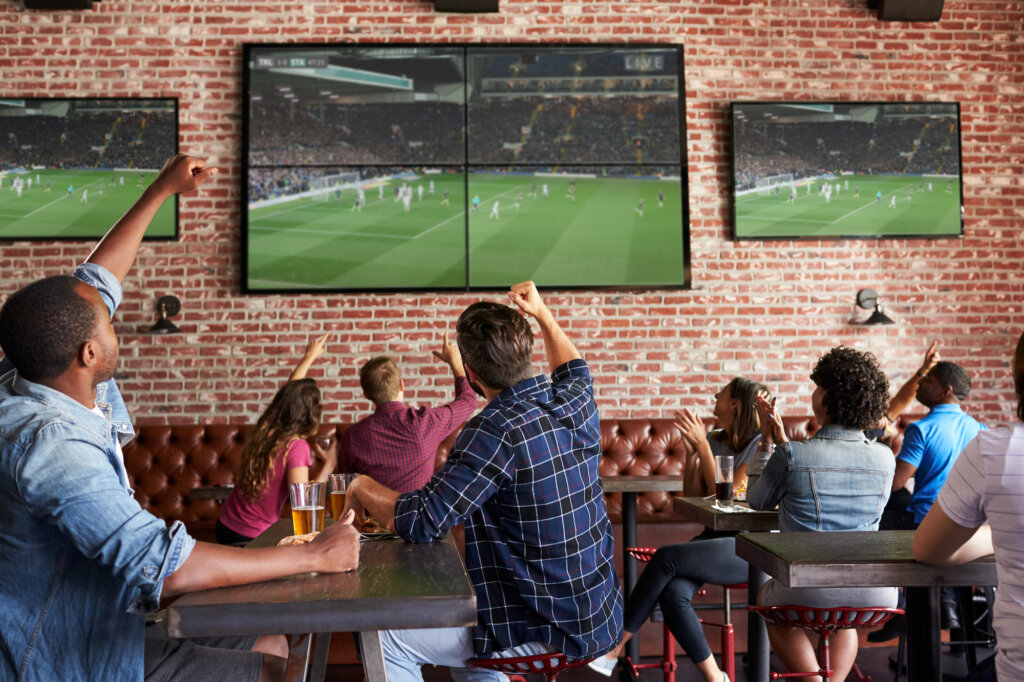Third Places: Spaces to Escape from Routine


Written and verified by the psychologist Elena Sanz
Where do you spend most of your time? More than likely, it’ll be your home and your workplace. However, if there were no other alternatives and if you only spent your days in either of these two places, would you really feel that you live in a society or that you’re part of a community? In fact, our sense of belonging is forged in so-called third places, a concept that we’re going to explore in this article.
This idea was proposed by the urban sociologist Ray Oldenburg, in his book, The Great Good Place. It focuses on the informal spaces where public life takes place. We might not always notice the importance of these sites, but they’re key to socialization, democracy, and community life.
What these places are, the functions they fulfill, and how they’ve been transformed over time are some of the points we’re going to consider.
Third places
To understand the origins of the term, third places, we must first talk about the other two. According to Oldenburg, there are three main spaces in which our daily lives take place. The first is the home where we live and the people we live with. It’s here that family rules are imposed. The second is work, which is governed by the culture of the organization.
Beyond these two places, is a third. It consists of the spaces that give life to communities and are the foundation of social relations. They’re made up of environments as diverse as bars, restaurants, libraries, hairdressers, shops, parks, and squares.
Characteristics of third places
- Third places are generally occupied by the same people who meet on a regular basis. Therefore, it’s common to find familiar faces in them. They’re also open to new members who enrich the experience.
- Socialization is of paramount importance in third places. These are environments where people meet, interact, and share. Here, relationships are born and existing ones are consolidated and nurtured. They mainly have a playful component.
- They feel like home. Third places are simple and welcoming spaces where people feel comfortable and relaxed. They’re not dominated by hostility or competitiveness but they encourage cooperation, fun, and shared moments.
- They’re neutral spaces free of hierarchies. Here, social distinctions are diluted. People don’t have to satisfy any specific requirements to feel welcome. Nor does the authority of some prevail over others. Furthermore, people go to third places voluntarily, without having any obligations to do so.

The important role of third places in society
Third places are key to our lives in many ways. On the one hand, they’re where we learn to employ democracy since these shared areas have their own rules that we must all abide by. They teach us about tolerance, diversity, and coexistence. For example, we accept that, in cinemas or libraries, we mustn’t raise our voices so as not to ruin the experiences of others. Or, that in stores, we must wait to be served.
Accepting and complying with these rules is part of a social contract. This also provides a series of advantages. It’s what makes it possible for societies to function. If we don’t adhere to the contract, we lose crucial elements for our well-being. For instance, human connection, social support, and a sense of belonging. An article published in the Journal of Service Research claims that in third places, we gain these advantages.
Being part of a community, feeling that we’re integrated into it and that we fulfill certain roles, protects our physical and psychological health. It’s other people and our bonds with them that enrich our existence and give us purpose. When this is lacking, it increases our risks of suffering isolation, depression, and even developing addictions.

Recovering life in the community
These environments for community coexistence exist everywhere. However, not all regions give them the same importance or deal with them in the same way. For instance, according to the OECD Better Life Index, in some countries, such as Spain, there’s a better balance between leisure and work than in those like Japan. In effect, they see third places as more relevant, so they take care of them.
But, this is changing. because large cities deprive us of the elements of third places and challenge our well-being. Sadly, individualism prevails, neighbors don’t get to know each other, and leisure takes place in crowded and impersonal shopping malls. Life becomes a routine between home and work and vice versa. As a result, our social and emotional environments are impoverished.
Furthermore, the advent of the internet has threatened community life. Indeed, despite the fact that social media connects us with people from all over the world, it also isolates us in a virtual world that some already think of as a ‘fourth place’.
For example, we might choose to stay in our homes consuming audiovisual content instead of going out. Or, we allow our cell phones to monopolize our attention instead of sharing our time with friends and family. Whatever the case, we’re increasingly less present and less connected with those around us.
In order to improve our quality of life and emotional health, we must preserve and recover life in the community. As a matter of fact, cultivating our public and shared spaces and enjoying them with others is also a form of self-care.
All cited sources were thoroughly reviewed by our team to ensure their quality, reliability, currency, and validity. The bibliography of this article was considered reliable and of academic or scientific accuracy.
- Organization for Economic Co-operation and Development. (s. f.). Better Life Index. OECD. https://www.oecdbetterlifeindex.org/topics/work-life-balance/
- Oldenburg, R. (1999). The great good place: Cafes, coffee shops, bookstores, bars, hair salons, and other hangouts at the heart of a community. Da Capo Press.
- Oldenburg, R. (Ed.). (2001). Celebrating the third place: Inspiring stories about the great good places at the heart of our communities. Da Capo Press.
- Rosenbaum, M. S. (2006). Exploring the Social Supportive Role of Third Places in Consumers’ Lives. Journal of Service Research, 9(1), 59–72. https://doi.org/10.1177/1094670506289530
This text is provided for informational purposes only and does not replace consultation with a professional. If in doubt, consult your specialist.








